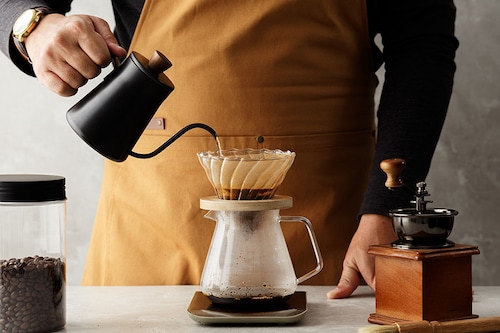How innovation is shaping the future of coffee
While the giants of the food industry are actively working on eliminating packaging, another path is being explored in laboratories, where coffee-free coffee is taking shape


Not so long ago, coffee consumption was revolutionized by Nespresso"s pod concept. But while single-serve pods have now become an everyday essential, they are undergoing a new transformation in line with the climate emergency. While the giants of the food industry are actively working on eliminating packaging, another path is being explored in laboratories, where coffee-free coffee is taking shape.
Cellulose, algae derivatives, sorbitol and sodium chloride form the recipe for the latest innovation from the Keurig brand when it comes to making coffee pods. This novelty was recently unveiled in a press release that details how the capsules decompose on their own in the trash, just like coffee grounds. The US-based food giant believes it has found the solution to eliminating the plastic usually used in coffee pods. This protective coating encloses the ground and pre-pressed coffee beans. And coffee fans need not fear sipping a lower quality version of their favorite drink, which can still be prepared under high pressure. Testing is currently underway to validate the invention, with a commercial launch scheduled for the fall. Nevertheless, these new capsules will have to be used in a specific coffee machine capable of identifying the different pod ranges in order to adapt the preparation process.
This innovation is reminiscent of the solution developed for Coffee B, from the Café Royal brand, whose algae-based casing surprised many coffee drinkers when it was announced in 2022. Taking the form of small balls, in which the coffee is contained, their interest lies in their ability to degrade over the weeks, depending on humidity levels. This kind of solution could be deemed effective in offsetting the ecological impact generated by the 100,000 tonnes of aluminum and plastic waste for which coffee pods are responsible. Last year, Café Royal France managing director, Ghassan Kara, told Forbes of the company"s ambition "to revolutionize the coffee sector and become the new standard for eco-responsible coffee consumption. To achieve this, we combine the advantages of capsule and bean-to-cup solutions without their respective disadvantages."
Just as Nespresso revolutionized coffee consumption with the launch of its patented pod concept in the early 1990s, a new generation of capsules is now rethinking the way we brew our morning coffee. The aim is to do away with plastic or aluminum. For its part, Nespresso is trying to keep its capsule concept alive by adapting it to the issue of climate change. In 2022, the Swiss giant unveiled a pod made from compostable paper following three years of research and development.
While coffee packaging has become the main focus of development to reduce the drink"s carbon footprint, another path seems to be emerging: that of lab-grown coffee. A Paris-based start-up called Stem believes that coffee cells can be propagated in laboratories to produce a more ethical product. This biotech research is part of the same development process as cell-cultured meat. The French company has followed in the footsteps of a Finnish laboratory that cultivated coffee plant cells in a bioreactor, according to research results published in 2021.
Finally, in Ede, the Netherlands, Northern Wonder has taken a different approach, blending lupin with barley, rye, chickpeas, figs, chicory, carob and blackcurrant to get as close as possible to the bitter, roasted taste of coffee, despite the recipe containing no coffee at all! In fact, it resembles the kind of blend already on the shelves for consumers seeking to avoid caffeine (pregnant women, for example), typically made from malt, barley and chicory. In the case of this Dutch product, synthetic caffeine is also added.
First Published: Mar 23, 2024, 08:26
Subscribe Now